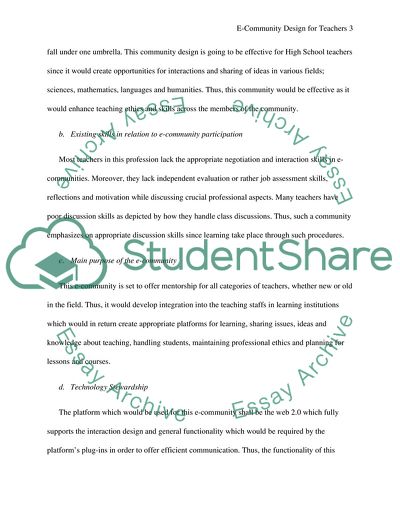Cite this document
(E-community Design for Teachers Essay Example | Topics and Well Written Essays - 2250 words, n.d.)
E-community Design for Teachers Essay Example | Topics and Well Written Essays - 2250 words. https://studentshare.org/design-technology/1828044-e-learning-community-design-for-teachers-staff
E-community Design for Teachers Essay Example | Topics and Well Written Essays - 2250 words. https://studentshare.org/design-technology/1828044-e-learning-community-design-for-teachers-staff
(E-Community Design for Teachers Essay Example | Topics and Well Written Essays - 2250 Words)
E-Community Design for Teachers Essay Example | Topics and Well Written Essays - 2250 Words. https://studentshare.org/design-technology/1828044-e-learning-community-design-for-teachers-staff.
E-Community Design for Teachers Essay Example | Topics and Well Written Essays - 2250 Words. https://studentshare.org/design-technology/1828044-e-learning-community-design-for-teachers-staff.
“E-Community Design for Teachers Essay Example | Topics and Well Written Essays - 2250 Words”. https://studentshare.org/design-technology/1828044-e-learning-community-design-for-teachers-staff.


